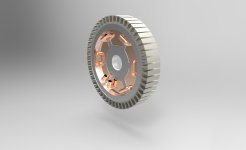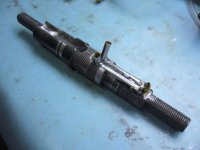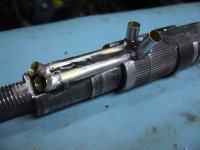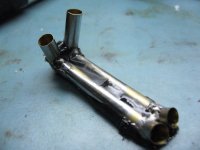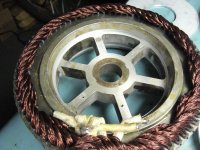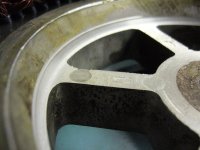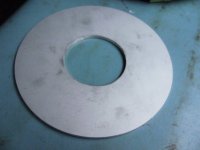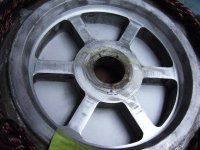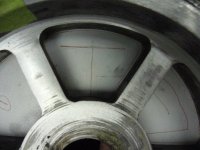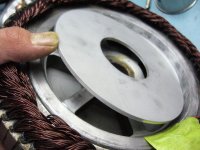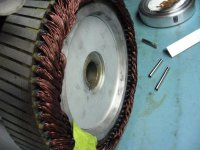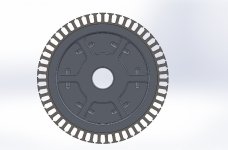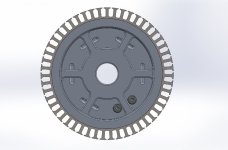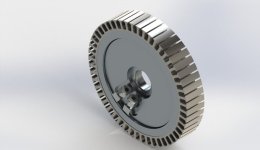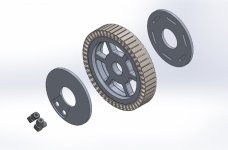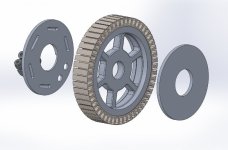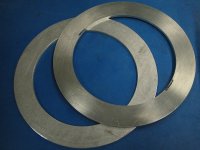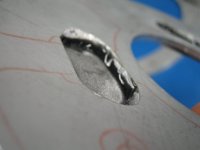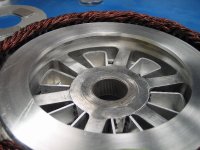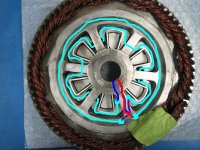Such an ambitious project, agreed with even if you got a bigger motor you would want to do this to it too. Your thirst for ebike power is unquenchable.
I love how you take aboard suggestions, Always have.
The copper pipe IMO was a great idea, as the fluid remains in the same volume and wont expand, turn into steam inside as easily. The way around this is using higher pressure pump, and estimate the heat/expansion and the pressure and flow required to avoid steam within that inner increased volume.. it was a good idea to keep the size uniform because Im not sure how well steam cools. But the new suggestion, looks like it can work better.
Also. It may be better to have the cooler water entering around the outside path first and draw the heat inwards away from the coils, this outer coolant path is at least restrictive and the inner path is less hot with lots of area and may avoid coolant expanding too much. You could heatsink glue and metal glue combination some aluminium heats sinks on both sides of the plates, low profile heat sinks all over outside plates, increase the surface area to take advantage of airflow, and onto inside plates within and along, the inner path to draw some heat towards the plates where you have the low profile heat sinks. The inside heat sinks would decreasing the volume of the inner coolant path a little, but make it not more restictive than your inlet and oulet pipes.
Ive used that metal epoxy together with, normal heat sink paste with very high powered leds, I place an area of paste in the middle of the heat sink contact point I want, leaving a clean borarder area around the heat paste, and use the metal epoxy glue around the outside of the paste, hold it down with clamp for a few hours till the epoxy hardens. Makes it solid as a rock on viagra and water proof,Works vey well.
I just put the paste on the led, place the led where I want it on the heat, sink push hard to spread the paste, and pull it off and clean the area I want to add the epoxy, add epoxy, put the led back into place, and calmp. You could do the same thing with your plates.
I believe if you can get rid of as much heat from within, making the motor still capable of getting rid of heat by its self, the less power you will require on the external cooling parts, basically all over more efficient.. Why not take advantage of the air flow and water before the water leaves the motor too.
I ran this simulation of this design in my head a few times, the coolant from the radiator to motor is the coldest, I just feel if inside path coolant gets hot you will lose the effect of coldest water where you may need it. And the outside path clostest to the coils is best to avoid getting hot first place.



